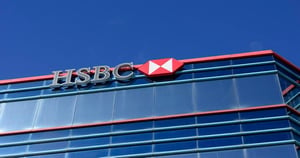Marks and Spencer Group PLC (MKS.L), a cornerstone of the UK’s high street retail experience, is poised for intriguing opportunities as it navigates the dynamic landscape of consumer habits. Known for its diverse product offerings ranging from clothing to food, and even financial services, this retail stalwart remains a compelling consideration for investors with a penchant for consumer cyclical stocks.
At the heart of Marks and Spencer’s appeal is its substantial market capitalisation of $7.58 billion, which underscores its significant presence in the department store industry. Trading at 374.4 GBp, the stock sits within its 52-week range of 285.10 – 411.30, signalling a stable yet poised position for potential growth. Analysts have set a price target range between 342.00 and 462.00, with an average target of 420.75, suggesting a potential upside of 12.38%.
One of the standout aspects for investors is the company’s robust revenue growth of 6.20%, reflecting its resilience in maintaining an upward trajectory despite the competitive market pressures. However, the absence of a trailing P/E ratio and other valuation metrics like PEG and Price/Book may raise eyebrows, suggesting that potential investors should weigh the growth prospects against the underlying earnings performance.
While the forward P/E ratio of 1,111.97 seems unusually high, this could be interpreted as a reflection of market expectations for significant future earnings. This is juxtaposed with a modest EPS of 0.14, indicating that profitability improvements could be on the horizon. Furthermore, with a return on equity of 10.10%, Marks and Spencer demonstrates efficient utilisation of shareholder equity to generate earnings.
In terms of cash flow, the company boasts a healthy free cash flow of approximately £629 million, which provides a solid foundation for reinvestment and shareholder returns. The dividend yield stands at a modest 0.96%, with a conservative payout ratio of 21.43%, suggesting that the company retains ample flexibility to reinvest in growth initiatives or increase dividends in the future.
Marks and Spencer’s technical indicators paint an interesting picture. The stock’s 50-day and 200-day moving averages are closely aligned at 367.61 and 364.32, respectively, indicating a stable trend. However, the Relative Strength Index (RSI) of 41.72 points towards a neutral to slightly oversold condition, which, coupled with the positive MACD of 1.66, suggests potential bullish momentum.
Analyst sentiment is largely positive, with 12 buy ratings and 4 hold ratings, and no sell recommendations. This consensus underscores the confidence in Marks and Spencer’s strategic direction, bolstered by its diverse business segments that include both in-store and international franchises, as well as online offerings and financial services.
Investors eyeing Marks and Spencer should consider its longstanding reputation and ability to adapt to shifting consumer behaviours. While challenges remain, particularly in a rapidly changing retail environment, the company’s robust cash flow, strategic initiatives, and analyst optimism present a compelling case for those seeking exposure to a venerable brand with growth potential. As always, investors are advised to conduct thorough due diligence and consider how this fits within their broader investment strategy.


































